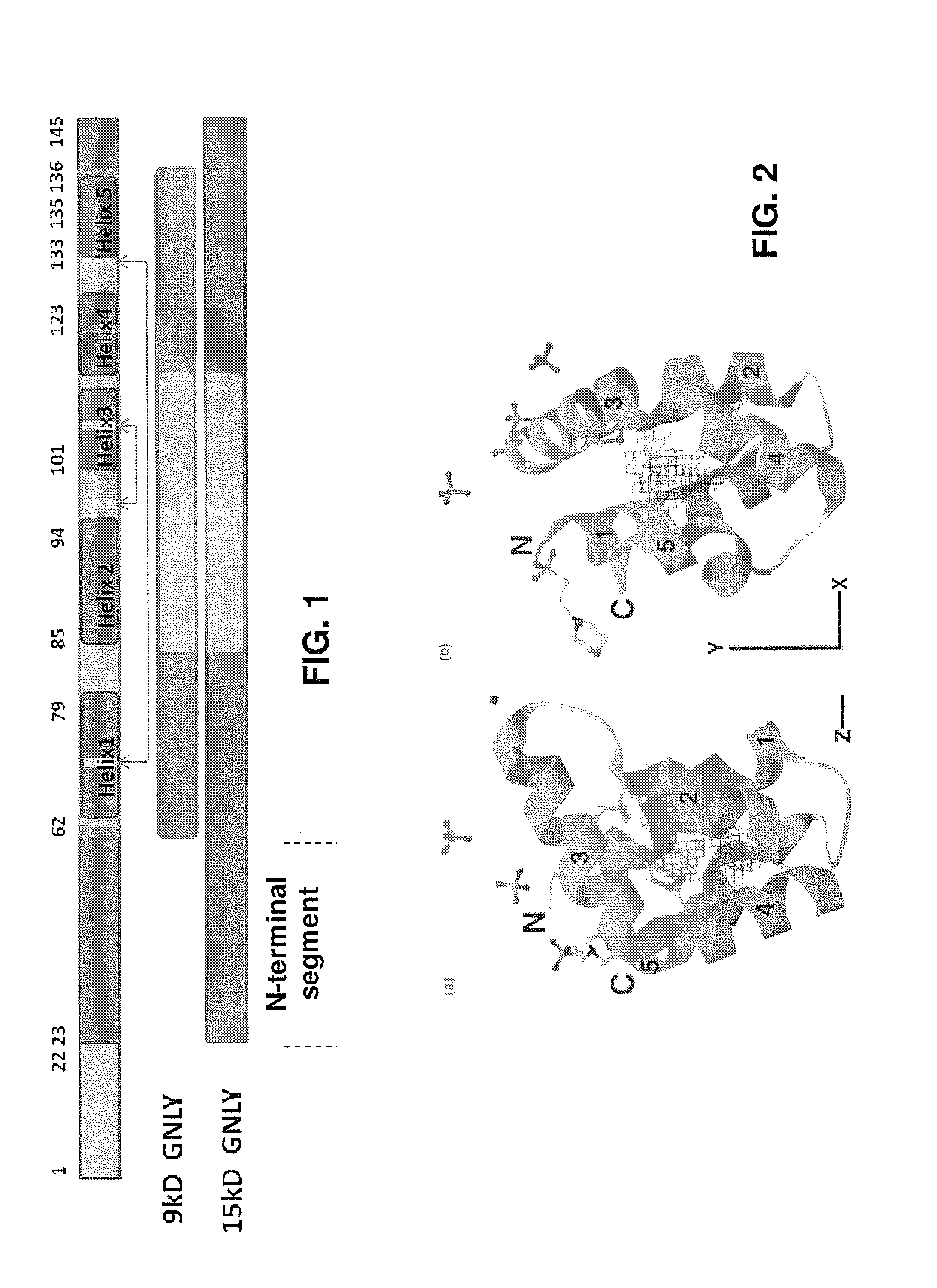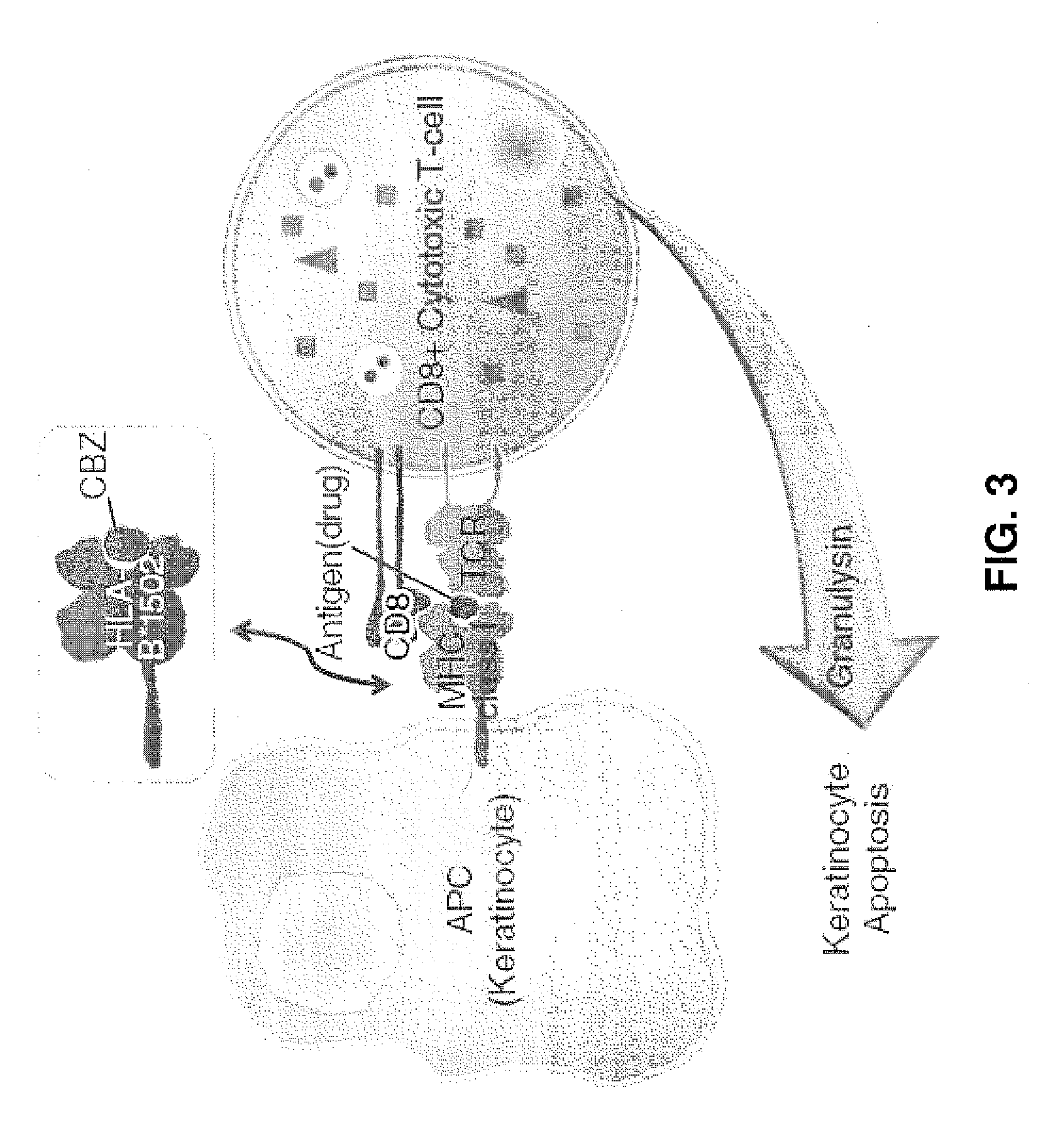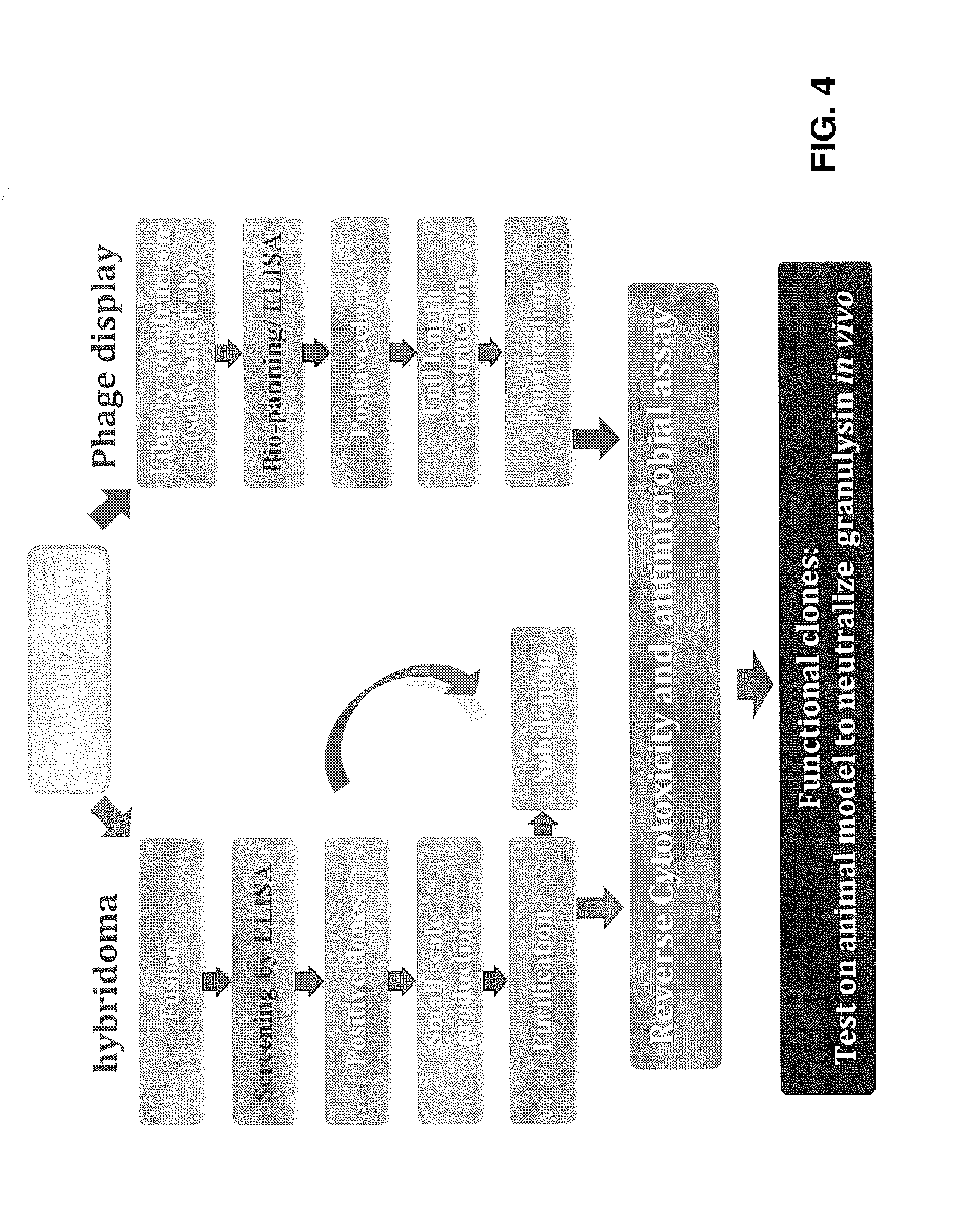Anti-granulysin antibodies and methods of use thereof
a technology of granulysin and antibodies, which is applied in the field of antigranulysin antibodies, can solve the problems of massive skin cell death in the epidermis of mice, cell destruction, etc., and achieve the effect of preventing the cytotoxicity of granulysin
- Summary
- Abstract
- Description
- Claims
- Application Information
AI Technical Summary
Benefits of technology
Problems solved by technology
Method used
Image
Examples
example 1
Immunization Procedure
[0051]Recombinant human granulysin (15 kDa, expressed in E. coli) was used as an antigen. This antigen was used with Freund's complete adjuvant (FCA) or Freund's incomplete adjuvant (FIA) to immunize mice according a suitable schedule. For example, Table 1 illustrates one exemplary immunization schedule:
TABLE 1Immunization SchemeScheduleDateDoseAdjuvantAdministrationImmunizedWeek 050 μgFCAs.c.Boost 1stWeek 225 μgFIAs.c.Boost 2ndWeek 425 μgFIAs.c.Boost 3rdWeek 625 μgFIAs.c.BleedWeek 8Test serum titer
example 2
Testing Serum Titer by ELISA
[0052]ELISA plates (e.g., 96-well plates) were coated with a recombinant human granulysin (15 kDa, E. coli expressed). Test samples were added to the plate and allowed to bind with the coated proteins. After washing to remove unbound antibodies, the bound antibodies were assessed with a second antibody (e.g., goat anti-mouse IgG coupled with horse raddish peroxidase (HRP)). The amounts of bound secondary antibodies can be estimated using a proper substrate for HRP. For example, 3,3′,5,5′-Tetramethylbenzidine (TMB), 3,3′-Diaminobenzidine (DAB), or 2,2′-azino-bis(3-ethylbenzothiazoline-6-sulphonic acid) (ABTS) may be used as a calorimetric substrate of HRP. Table 2 shows results of one example.
TABLE 2Serum Titers by ELISA (HRP reaction, OD readings)NormalDilutionNo. 1No. 2No. 3No. 4No. 5No. 6Sera103×2.1282.1652.0832.1652.0872.1730.055104×2.1582.0842.0822.0802.1312.1160.044105×1.9221.8501.4431.9571.7902.1210.052106×0.4210.5210.2680.5480.5191.3030.039Blank: 0...
example 3
Hybridoma Generation
[0053]After immunization of the mouse and confirmation of the production of antibodies with the ELISA assays, the mouse was sacrificed. The splenocytes from the mouse were fused with NS-1 myeloma cells with the aid of PEG 1500.
[0054]The hybridoma cells were then screened for the production of anti-granulysin antibodies using ELISA assays in a manner similar to that described above. That is, the screening was performed using recombinant human granulysin (15 kDa) expressed from E. coli or NS0 cells, and the positive clones were identified using a secondary antibody-HRP conjugate (goat anti-mouse IgG-HRP). The NS0 cells are clonal derivatives of the parent NS1 cell line and are capable of growth in suspension culture.
[0055]In this example, using the E. coli expressed recombinant human granulysin (15 kDa), 112 clones were found to have OD>1.8 and 22 clones were found to have OD>1.5. Similarly, using NS0 expressed recombinant human granulysin (15 kDa), 111 clones were...
PUM
| Property | Measurement | Unit |
|---|---|---|
| Immunogenicity | aaaaa | aaaaa |
Abstract
Description
Claims
Application Information
 Login to View More
Login to View More - R&D
- Intellectual Property
- Life Sciences
- Materials
- Tech Scout
- Unparalleled Data Quality
- Higher Quality Content
- 60% Fewer Hallucinations
Browse by: Latest US Patents, China's latest patents, Technical Efficacy Thesaurus, Application Domain, Technology Topic, Popular Technical Reports.
© 2025 PatSnap. All rights reserved.Legal|Privacy policy|Modern Slavery Act Transparency Statement|Sitemap|About US| Contact US: help@patsnap.com



